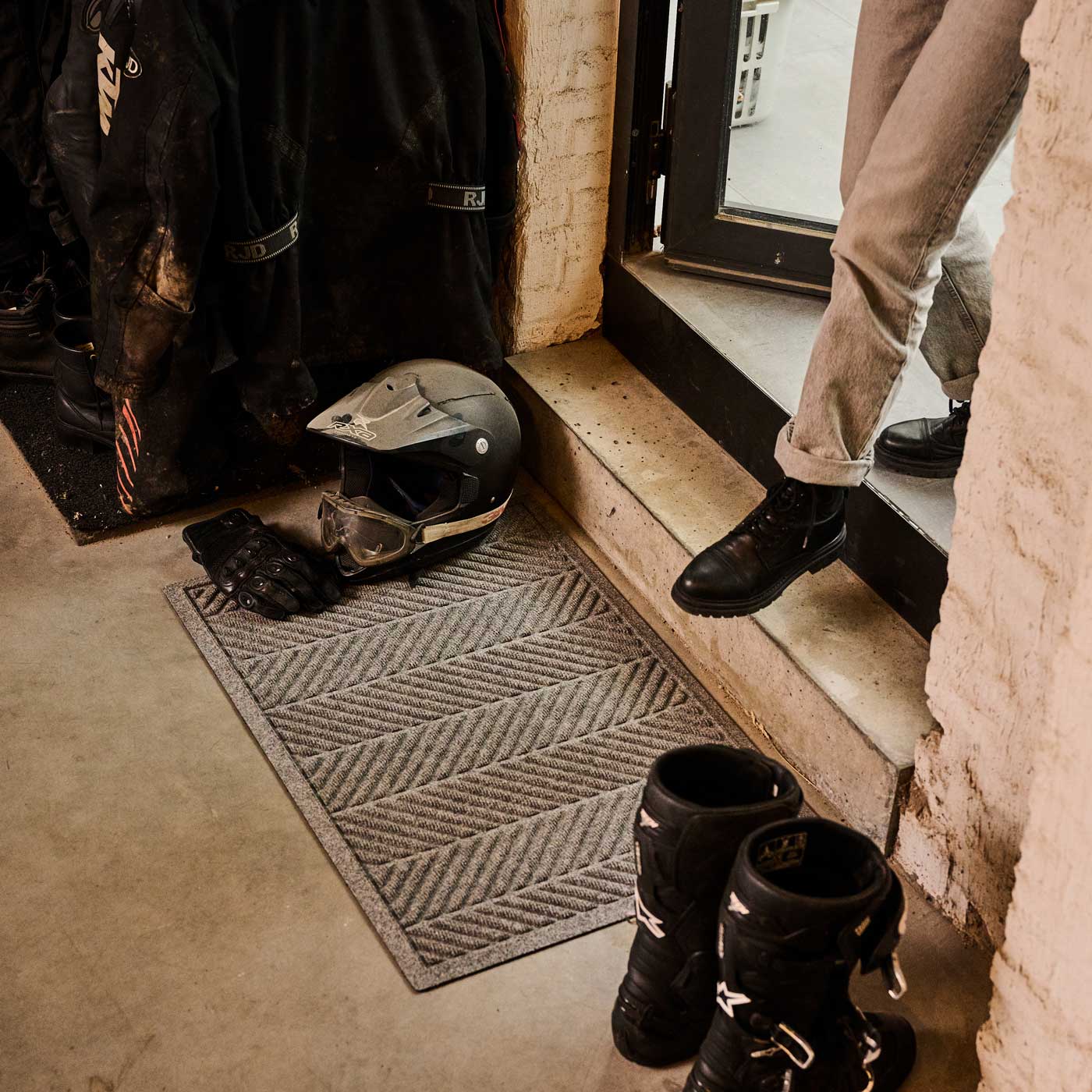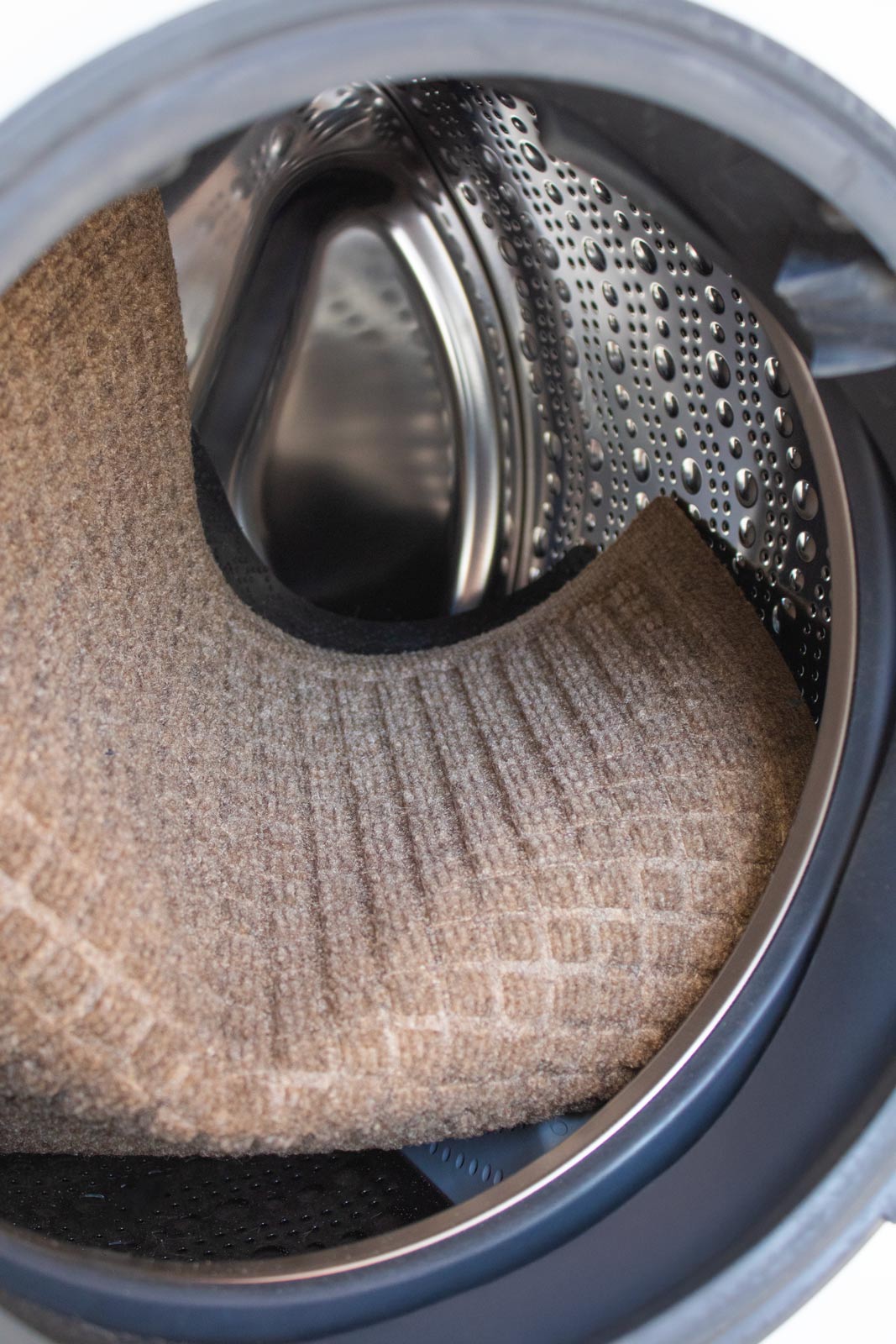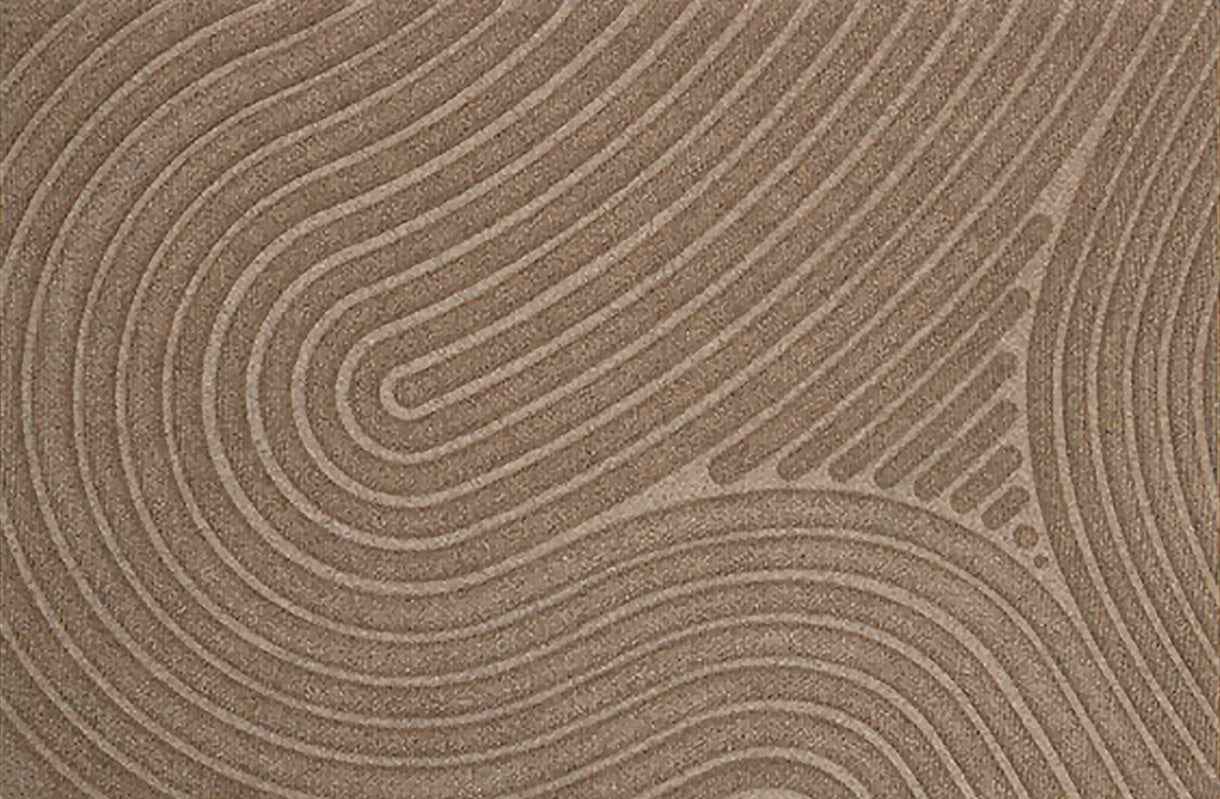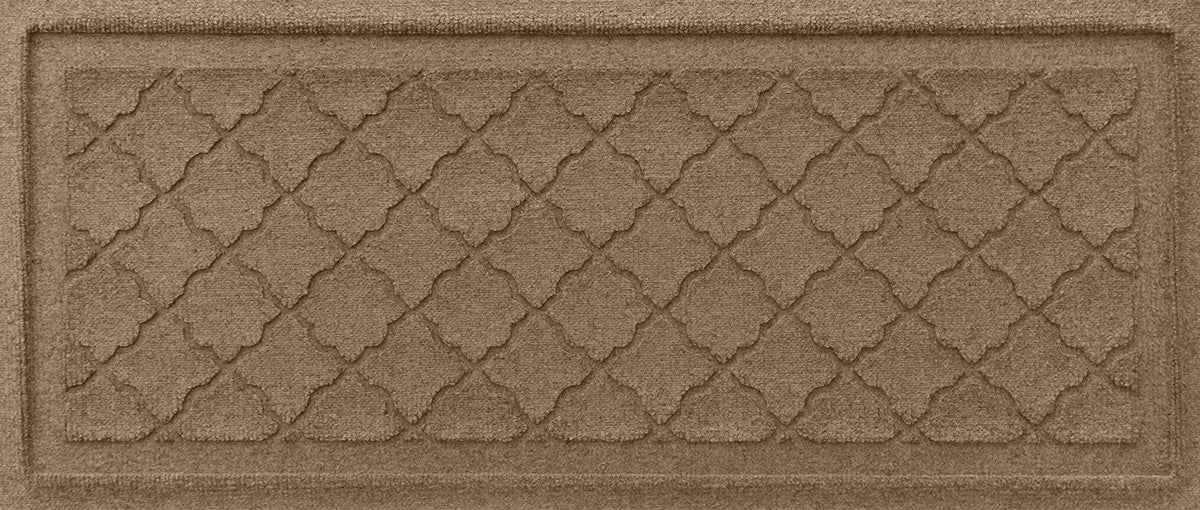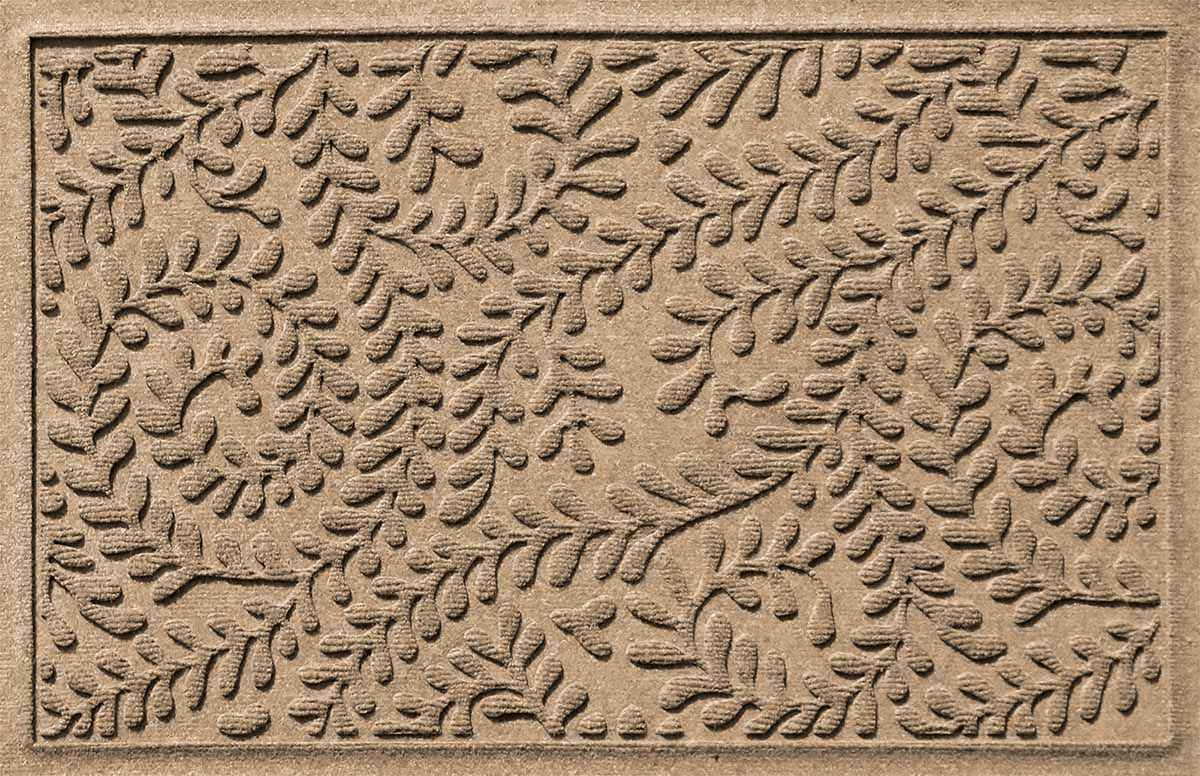
Outdoor Door Mat Guide: What Most Homeowners Get Wrong
Why outdoor door mats matter more than you think
You step on door mats every day. Most people never give them a second thought.
But here's the truth: your door mat works harder than you realize. It protects your floors, your health & your wallet. This isn't about decoration. It's about defense.
Before we dive in, if you have not already read: Your Door Mat Is Wrong: Hidden Signs It's Time for a New One, then head over there first, we'll see you shortly :)
They protect your floors and your health
Eighty-five percent of indoor dirt comes from people's feet. That's not just unsightly soil—it's abrasive grit that acts like sandpaper on your floors. Every step grinds those particles deeper, wearing down even the toughest surfaces.
A quality door mat stops this damage before it starts. WaterHog mats trap these particles at the threshold, protecting hardwood from scratches that lead to expensive refinishing.
The dirt on your shoes carries more than soil. Bacteria, allergens & contaminants hitch a ride into your home. Stop them at the door. Create a cleaner space for your family, especially if you have young children or allergy sufferers.
Coir door mats fail when wet. They become breeding grounds for mold & bacteria. Closed-cell fibers like PET and polypropylene stay clean, trap contaminants & maintain air quality.
They reduce cleaning time and effort
Constantly cleaning floors? Your door mat might be the problem.
Proper outdoor mats cuts the dirt entering your home. Less dirt means less sweeping. Less vacuuming. Less mopping.
Dirt particles cut carpet fibers over time. They create that worn, dull look that ruins your flooring investment. Capture that dirt at the door. Keep your carpets looking newer, longer.
Busy households need every advantage. A good door mat system frees up your time. Skip the daily floor cleaning. Focus your energy elsewhere. Save money on professional cleaning services too.
They improve safety by preventing slips
Door mats prevent accidents. Slips and falls cause more than 40% of workplace injuries. Home accidents happen just as often.
Rain or snow creates dangerous conditions. Water tracked inside turns smooth floors into slip hazards. Quality mats absorb moisture before it becomes a problem.
WaterHog mats deliver:
-
Superior water absorption
-
Non-slip backing that stays put
-
Textured surfaces that scrape shoes clean
-
Bevelled edges that prevent trips
Households with elderly members or young children need this protection most. A door mat can mean the difference between safe entry and a dangerous fall.
Drainage holes in rubber mats prevent water pooling. They maintain grip even during heavy rain. Coir mats waterlog and lose function when you need them most.
Your door mat works three jobs: protecting floors, cutting cleaning time & preventing accidents. Quality matters. A good mat is the simplest way to maintain a cleaner, safer home.
What is the best outdoor door mat?
The difference between a door mat that works and one that fails comes down to one thing: how it handles real-world conditions. We've tested countless options. We've put them through rain, sleet, snow & sludge. One brand consistently outperforms the rest: WaterHog.
Why WaterHog mats outperform others
Our bi-level design does what flat mats can't. Stain-resistant fabric sits over rubber nubs, creating channels that trap dirt and moisture below shoe level. The debris stays put. Your floors stay clean.
Standard mats flatten under foot traffic. WaterHog mats don't. We build them with premium solution-dyed PET fabric weighing 24 ounces per square yard. They resist fading, stains, and rot. They dry quickly after getting soaked.
The water dam border keeps moisture contained within the mat instead of leaking onto your floors. Place these mats anywhere without worry.
Common problems with cheap mats
Cheap mats create more problems than they solve. They crack in sun. They become brittle in cold. They fade after minimal weather exposure.
Worse, they move around. Without proper backing, budget mats slip and slide underfoot. They become tripping hazards instead of preventing them. Low-quality mats leak water through to your floors.
Coir door mats look natural but perform poorly when wet. They don't dry quickly. They stay soggy for extended periods, creating perfect conditions for mold and mildew. The fibers break down over time, leaving messy residue around your entryway.
Key features to look for in a quality mat
A door mat should work as hard as you do. Look for these essential features:
-
Superior water absorption: Quality mats hold significant water without leaking
-
Effective dirt-trapping design: Textured surfaces or bi-level construction that scrapes and captures debris
-
Durable, weather-resistant materials: Synthetic fibers like polypropylene or PET outlast natural materials
-
Quick-drying properties: Fast-drying mats prevent mildew growth
-
Easy maintenance: Simple cleaning methods like vacuuming or hosing down
WaterHog mats work everywhere. Front entrances. Back doors. High-traffic walkways. Even indoor areas. They perform consistently across all these environments.
Every mat we make is built to last. Built to perform. Built to handle whatever you throw at it.
Choosing the right material for your outdoor mat
Your door mat material determines everything. How it performs. How long it lasts. How well it protects your home.
The choice isn't about looks—it's about function, durability & protection.
Rubber vs coir vs synthetic fibers
Each material tells a different story when put to the test:
Rubber mats handle wet conditions without question. Heavy-duty rubber provides superior traction. It won't rot. It won't curl. It withstands temperature swings that would destroy lesser materials. Quality rubber mats stay put and stay flat.
Coir mats scrape well with their coarse texture. They look natural. They work best under cover, away from direct weather exposure. But they have limits.
Synthetic fibers like polypropylene and PET combine strength with smart moisture management. These closed-cell fibers outlast natural alternatives. They're built for year-round outdoor punishment.
Why coir door mats fail in wet weather
Coir door mats can't handle what nature dishes out.
They absorb water fast but dry slow. Perfect conditions for mold and mildew. The fibers stay damp. They break down. They deteriorate faster than you'd expect.
Coir's biggest weakness? Once saturated, it holds moisture against your doorway. PVC-backed versions make it worse—trapping water inside with nowhere to go.
Walk on wet coir and watch the fibers pull away from the base. The mat sheds. It creates mess. It falls apart under real-world use.
Benefits of closed-cell fibers like PET and polypropylene
Closed-cell technology changes the game:
-
Superior moisture control: These fibers dissipate water instead of absorbing it. Faster drying. Better performance.
-
Extended durability: PET and polypropylene resist breakdown from moisture and UV exposure.
-
Consistent scraping power: The texture removes dirt while maintaining integrity over time.
-
Environmental responsibility: Quality mats use recycled PET fibers, giving plastic bottles new purpose.
These materials perform when others fail. Cold climates. Freezing temperatures. Traditional mats become stiff and useless. Closed-cell fibers stay flexible and functional.
Avoiding mats that shed or trap moisture
Some mats create more problems than they solve.
Loose fiber construction means constant shedding. Frequent cleaning. Early replacement. Natural fiber mats shed because they're deteriorating. It's that simple.
Moisture-trapping designs create unhygienic conditions. Look for proper drainage. Moisture-dissipating technology. Open structures that let water flow through.
The best outdoor door mats feature materials that spread moisture rather than absorb it.
Your door mat faces whatever nature throws at it. Rain, sleet, snow & sludge. Choose materials built to handle the challenge. Choose materials that won't let you down.
How to size and place your outdoor door mat
Getting the size right matters. Your door mat works only if it covers the ground where people actually step.
Standard sizes for single and double doors
Single doors need mats that cover 80% of the doorway width. For a standard 36-inch door, that means at least 29 inches across. Most people choose 18 x 30 inches, but 24 x 36 inches gives you better coverage when traffic gets heavy.
Double doors demand bigger mats. A 6-foot-wide double door calls for at least 5 feet of mat. We recommend 24 x 60 inches for double doors. It gives multiple people room to wipe their feet without crowding.
WaterHog mats come in sizes that fit your door. No guessing. No compromising on performance.

Why mat thickness and profile matter
Check your door clearance before you buy. Measure the gap between your door bottom and the floor. A mat that's too thick stops your door from opening.
Low-profile mats work best for tight clearances. Anything 0.5 to 0.6 inches thick clears most doors and stays accessible for wheelchairs and walking aids. Thicker mats scrape better but can jam your door.
WaterHog mats balance scraping power with practical clearance. Your door opens. Your mat works.
Tips for measuring your space before buying
Measure twice, buy once:
-
Take your doorway width and multiply by 0.8 for minimum mat width
-
Allow for two full steps—30 to 45 inches minimum
-
Commercial spaces need 3-4 steps of coverage for maximum dirt removal
-
Mat wells require millimetre precision and multiple measurements
Not sure how it'll look? Chalk out the dimensions on your entranceway. You'll see exactly what you're getting.
Bigger beats smaller every time. A small mat misses dirt and water. A properly sized mat catches everything before it gets inside.
How to clean outdoor door mats the right way
Your outdoor door mat works hard. It deserves maintenance that matches its performance.
Cleaning methods by material type
Different materials demand different approaches. Here's what works:
Coir door mats need gentle treatment. Shake them hard outdoors first. Brush away stubborn dirt when completely dry. Avoid soaking them—coir holds water too long and breeds mold. For stains, use mild detergent sparingly, scrub gently, then air dry completely.
Rubber mats are tough. Shake out debris, then hose them down. Scrub with soap and water for stubborn dirt. These mats handle pressure washing—keep 12 inches away, stay under 2000 PSI.
Synthetic fiber mats balance performance with easy care. Vacuum regularly. Spot-clean with mild detergent. Polypropylene mats take more aggressive cleaning without breaking down.
Why machine-washable mats change everything
Machine-washable mats like WaterHog eliminate the guesswork. They offer complete dirt removal, thorough sanitization, and convenient cleaning that happens more often. No harsh chemicals needed.
Wash with cold water on gentle cycle. Use mild detergent. Skip the bleach—it damages fibers and backing. Air dry completely before putting back to work.
How WaterHog simplifies maintenance
WaterHog mats work as hard as you do. They handle multiple cleaning methods without complaint:
-
Vacuum them regularly
-
Machine wash when needed
-
Pressure wash for deep cleaning
-
Spot clean for quick touch-ups
Sweep it. Vacuum it. Hose it down. Nobody will ever know what you put it through.
Their quick-drying design prevents mildew between cleanings. The crush-resistant surface maintains effectiveness through countless cleanings—unlike coir mats that shed more fibers each time.
Choose a mat built for easy maintenance. You'll spend less time cleaning and more time enjoying floors that stay clean.
Your Door Mat Works Harder Than You Think
Your door mat stands guard. Day after day, it takes a beating from feet, paws, boots & weather. Most homeowners never give it a second thought.
That's a mistake.
A quality door mat protects your floors, saves cleaning time, and prevents dangerous slips. It's your home's first line of defense. The difference between a mat that works and one that fails comes down to materials & construction.
Coir mats might look natural, but they fail when it matters most. They hold moisture. They breed mold. They shed fibers with every cleaning. That's not durability—that's deterioration.
Closed-cell fibers tell a different story. They trap dirt below shoe level. They dry fast. They resist breakdown even after years of punishment. Materials like PET and polypropylene prove themselves through real-world conditions.
Size matters too. Cover 80% of your doorway width. Choose the right thickness for your door clearance. Get these basics wrong, and even the best mat won't perform.
Maintenance should be simple. Sweep it. Vacuum it. Hose it down. The best mats handle whatever cleaning method you throw at them. Machine-washable construction means deep cleaning without damage—a feature that separates quality from compromise.
We put mats through rigorous testing because that's how you discover what really works. Rain, snow, mud, and heavy foot traffic reveal the truth about materials and construction. Quality is forged through adversity.
Your door mat investment pays for itself. Reduced floor damage. Less cleaning time. Fewer replacements. Better safety. The math is simple when you choose performance over price.
Next time you step on your door mat, remember what it's doing for you. It's not just catching dirt—it's protecting everything beyond your threshold.
Still looking for more info: if you have not already, have a read of: Your Door Mat Is Wrong: Hidden Signs It's Time for a New One.
FAQs
Q1. What makes WaterHog mats superior to other outdoor door mats? WaterHog mats excel in moisture management, their bi-level design traps dirt and moisture effectively, and they're made from durable, stain-resistant PET fabric that maintains its performance over time.
Q2. How often should I clean my outdoor door mat? Regular cleaning is essential to maintain your door mat's effectiveness. For most mats, weekly vacuuming and monthly deep cleaning are recommended. However, the frequency may vary depending on foot traffic and weather conditions.
Q3. What size door mat should I choose for a standard single door? For a standard single door (about 36 inches wide), choose a door mat that's at least 29 inches across. Common sizes are 18 x 30 inches or 24 x 36 inches, with the latter providing better coverage for high-traffic areas.
Q4. Are coir door mats a good choice for outdoor use? While coir door mats offer a natural look, they're not ideal for outdoor use, especially in wet conditions. They absorb water readily but dry slowly, promoting mold growth. They also tend to shed fibers and deteriorate faster than synthetic alternatives.
Q5. Can outdoor door mats really improve home safety? Yes, quality outdoor rubber mats can significantly improve home safety. They provide traction, absorb moisture, and prevent water from being tracked inside, reducing the risk of slips and falls. This is especially important during wet weather conditions.

